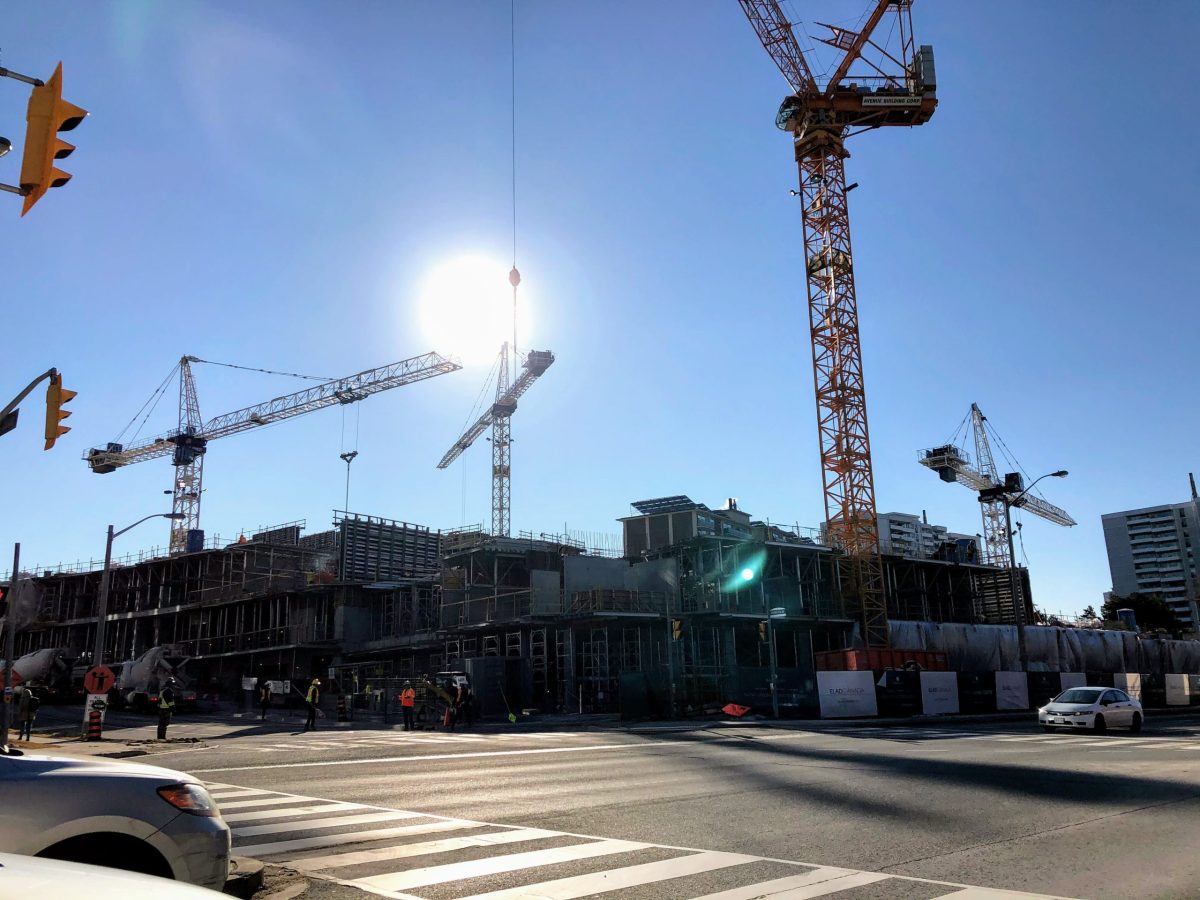

 A recent economic report by the Ontario Construction Secretariat revealed that total ICI building construction investment cooled down by a bit at -0.3 per cent from November to December due to a -2.5 per cent contraction in the commercial sector.
A recent economic report by the Ontario Construction Secretariat revealed that total ICI building construction investment cooled down by a bit at -0.3 per cent from November to December due to a -2.5 per cent contraction in the commercial sector.
According to the report, industrial and institutional sector investment saw marginal gains. Headline CPI dropped below 3 per cent.
The report also noted that the IPPI showed a mixed picture with cement, glass, and other non-metallic products price inflation posting a significant drop, while the decline in lumber and other wood product prices stayed the same. The Building Construction Price Index posted a small slowdown for Toronto, according to the report.
Total ICI investment in building construction decreased by 0.3 per cent in December, from $2.63 billion to $2.62 billion. Commercial building investment was -2.5 per cent month-to-month and decreased from $1.36 billion to $1.32 billion.
According to the report, industrial investment grew 1.6 per cent, and institutional sector investment increased 2.6 per cent, from $635.1 million to $651.7 million.
The OCS noted that commercial sector investment has been on a gradual decline since July, while industrial sector investment continues to post record highs. The report also noted that institutional sector building investment is the highest since 2012 and continues to increase towards record levels.

While there was a small dip in the month-to-month investment, total investment in ICI building construction in 2023 was up 12.5 per cent compared to 2022, with the industrial sector experiencing the largest percentage change (28.3 per cent), according to the report.
The strongest gains were from the first half of the year, the report noted, as Q1 2023 was up 13.7 per cent compared to Q1 2022, and Q2 2023 was up 15.9 per cent from Q2 2022. It was also noted that Q3 and Q4 gains were noteworthy, at 11.5 per cent and 9.5 per cent respectively.
According to the OCS, Toronto posted the highest investment numbers, with the largest gains coming from July 2023.
With the exclusion of Toronto, the Ottawa-Gatineau (Ontario Part) CMA had the highest commercial ($831.4 million) and institutional ($572.5 million) building investment in 2023.
The OCS noted that institutional sector investment could be attributed to both hospital construction and the parliament centre block reconstruction.
The report noted Windsor posted the highest industrial sector investment (excluding Toronto), at $720.2 million; a 257 per cent increase in building construction investment compared to 2022, which was likely due to the construction of the EV battery plant.
In terms of Ontario’s headline inflation, it dropped from 3.4 per cent in December to 2.7 per cent in January. This was mainly due to a combination of lower goods inflation, which dropped from 2.5 per cent to 1.4 per cent, and -4 per cent inflation in energy. Core inflation ebbed slightly, from 3.5 per cent to 3.2 per cent as services price inflation fell from 4.1 per cent to 3.8 per cent.
The report noted that the Building Construction Price Index was down when looking at the Toronto CMA, from 7.5 per cent in Q3 2023 to 5.5 per cent in Q4 2023.
Inflation for the industrial component dropped from 7.8 per cent to 5.5 per cent. The Ottawa region saw less prominent decreases, slowing from 8.2 per cent year-over-year inflation to 7.8 per cent for non-residential construction overall.

Statistics Canada noted that some wage pressure remained as labour supply issues persisted. It was also noted that the construction job vacancy rate in November 2023 was 4.5 per cent, which was the lowest since February 2021 and could help further ease labour costs.
Energy and petroleum product prices continued their downward trend in January, marking the 11th straight month of negative year-over-year (year-over-year) inflation, according to the report. Fabricated metal products and construction materials were also down for the 11th month in a row.
Cement, glass, and other non-metallic mineral products experienced the largest drop in year-over-year inflation in over two year. Packaging material and containers also fell, according to the report.
The report noted, however, that lumber and other wood products inflation was positive for the first time in 15 months. However, it was up only 0.2 per cent year-over-year, which is likely due to the large drop posted in January 2023.